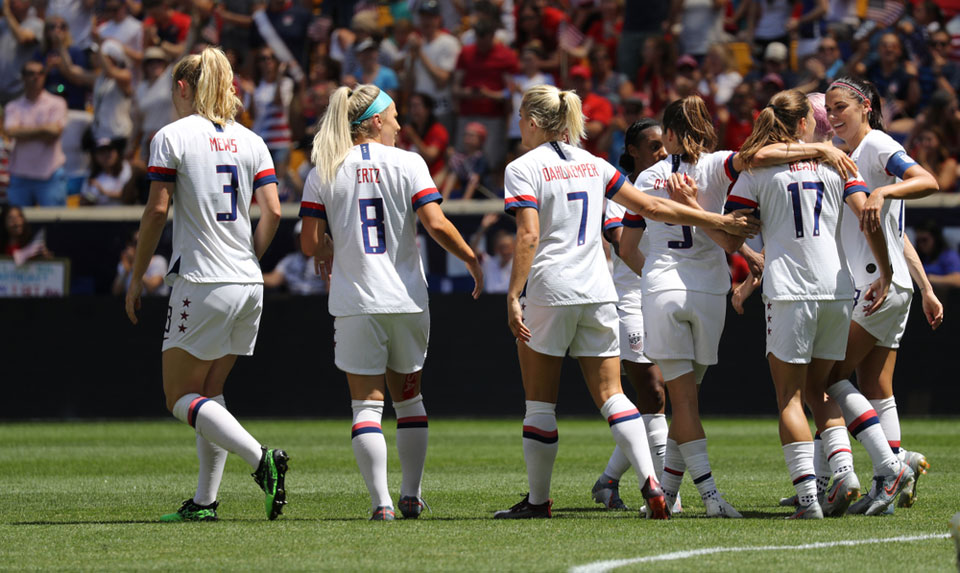
The Women’s World Cup is now underway. Taking place in France, the tournament features 24 of the best women’s national teams throughout the world.
It’s also a stage for widespread gender discrimination.
Prior to the tournament, the distribution of tickets was absolutely botched by the infamously incompetent folks at FIFA. And here in the United States, a lawsuit by our women’s national team marked the run-up to the tournament.
That lawsuit, filed by 28 players and the union that represents them, alleges widespread discrimination against women players by the United States Soccer Federation, even after a recently ratified collective bargaining agreement. Players say they’re consistently denied equal pay, promotion, and playing and travel conditions compared to the men’s team.
Their suit comes on the heels of a 2016 complaint by five members of the women’s team — Hope Solo, Carli Lloyd, Megan Rapinoe, Becky Sauerbrunn, and Alex Morgan — with the Equal Employment Opportunity Commission, which detailed similar complaints.
Elsewhere, the reigning World Female Player of the Year, Ada Hegerberg of Norway, elected not to play for her national team in this World Cup because of mistreatment by the Norwegian Football Federation that left her mentally broken and depressed. That’s even after Norway became the first country to pay men and women players the same amount.
This is, to say the least, a bad look for the premier competition for women’s soccer, and especially for the premier team in the world.
The U.S. women’s team is the defending champion of the World Cup, and leaps and bounds more successful than the U.S. men’s team. That’s true of both their on-field performance and their off-field earnings, historically providing more revenue for the U.S. Soccer Federation than the better-paid men’s team.
This is a familiar trend in international sports. Women’s tennis is seemingly always embroiled in controversy over pay and facility disparities between male and female players.
In basketball, the WNBA has long been plagued by the same. Many of the best players in that league have to play abroad year-round to make ends meet. Some players — like WNBA MVP Breanna Stewart — end up getting injured in the never-ending grind.
This is no different from what’s going on in the broader economy.
Women are still only paid around 81 percent of what men make for comparable work. And a lack of access to parental leave, reproductive health care, and affordable child care puts them at a further disadvantage.
The members of the women’s national team are lucky enough to be a part of a union. Studies show that unionization helps narrow the gender gap by giving workers more leverage against discrimination and other abuse.
The U.S. women’s team is fighting the same battle as millions of workers. The rest of us should support their lawsuit, their union, and others like it across the country.
Institute for Policy Studies

MOST POPULAR TODAY

High Court essentially bans demonstrations, freedom of assembly in Deep South

U.S. imperialism’s ‘ironclad’ support for Israel increases fascist danger at home

Zionist organizations leading campaign to stop ceasefire resolutions in D.C. area

Resource wars rage in eastern Congo, but U.S. capitalism only sees investment opportunity







Comments